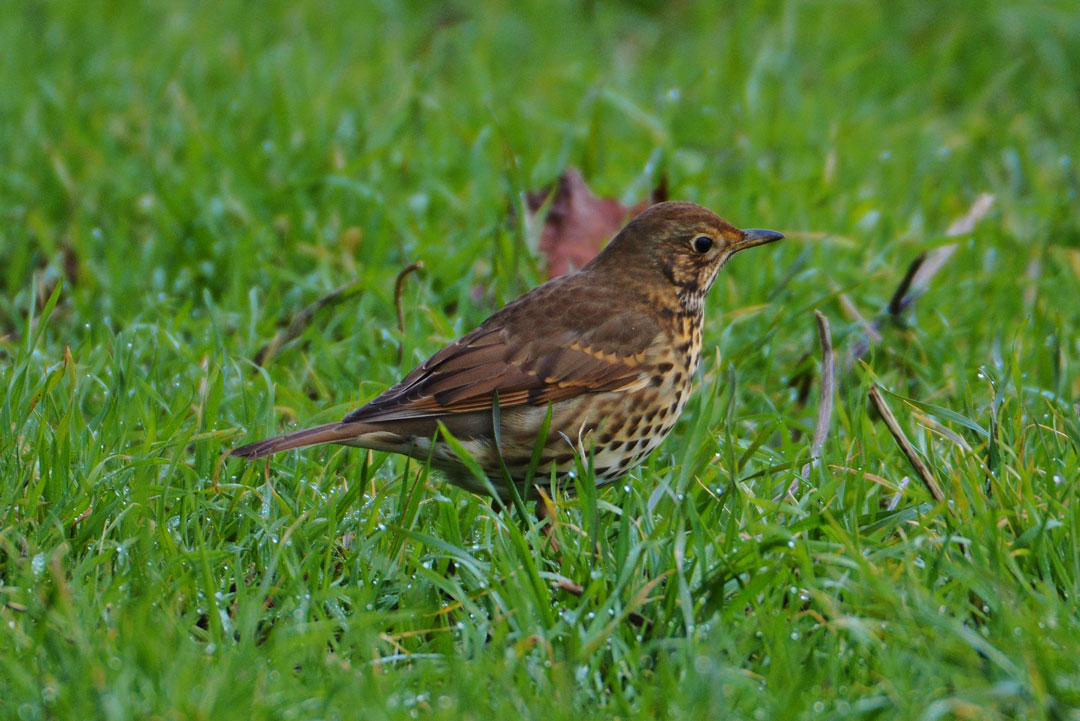AN INTRODUCTION TO THE BIG GARDEN BIRDWATCH – 28 TO 30 JANUARY 2022
Image (above) by the Late Matt Walton, a local birder and photographer. Will you see a song thrush in your garden this year?
From all of us at RSPB Lakenheath Fen, we would like to wish you a Happy New Year! January is named after the Greek God Janus, who was the God of transitions, doorways and gates (and therefore new beginnings). Janus was depicted as having two faces- one looking to the past, and one to the future. So as the days begin to lengthen, and we begin a new calendar year, we might reflect on 2020 but we hope that the year ahead will be full of success for Lakenheath Fen and its visitors.
One of the first events of the year for wildlife lovers is the Big Garden Birdwatch, which takes place over a long weekend in January and this year it’s 28-30th January. All over the UK, families and individuals, regardless of age or ability, can count the birds they see in their garden or local green space, for an hour. They count the highest number of each species seen at any time, and there is space to record not just birds but other garden wildlife too, such as squirrels or wood mice! Please feel free to come along here to do your survey if you want to.
You can either record what you see on paper or on the Big Garden Birdwatch website. If you have internet access, then visit rspb.org.uk where there is a large banner across the front page all about Big Garden Birdwatch, and you can download recording sheets here to print after registering. If you aren’t online, then you can phone 01767 693680 which is our number for general enquiries, and they will be able to help you register and send you recording sheets in the post. The Big Garden Birdwatch is a fantastic activity for families and often a way to help get children interested in nature, as well as for adults who want to learn more about birds to have a place to start.
But why count the birds, you may ask? Well, all the data from the years the Birdwatch has been running (since 1979!) adds up to give a detailed picture of how the birds in our garden are faring. Way back in 1979 the RSPB teamed up with Blue Peter, and Peter Holden, the then-presenter, asked children to count the birds in their garden. In 2001 the event was modified to include adults too, and in 2021 over a million people took part. The commonest bird was the house sparrow, then the blue tit took second place and the chatty, boisterous but beautiful starling took third spot. Magpies, robins and blackbirds were commoner than in 2020 whilst woodpigeons, goldfinches and long-tailed tits got a bit less common.
These trends matter even more when you look over a longer time period- for example, thanks to ‘BGBW’(Big Garden Birdwatch) data, we know that since the survey began song thrushes have declined by 77% and house sparrows 56%. And even more sudden trends, such as the fall of 90% in greenfinches since 1995, are supported by the results of each Big Garden Birdwatch. So not only is it a fun and inclusive activity for all ages, that helps people to connect with nature and learn, but it also does the world of good for our garden birds by highlighting how many of them there are out there in our gardens.
I hope this first article has been interesting and useful for you and I hope that despite the short, cold days of January you are able to get outside to enjoy some time with wildlife and in the precious winter sunshine!
With best wishes,
Heidi Jones (Visitor Experience Officer, RSPB Lakenheath Fen).

